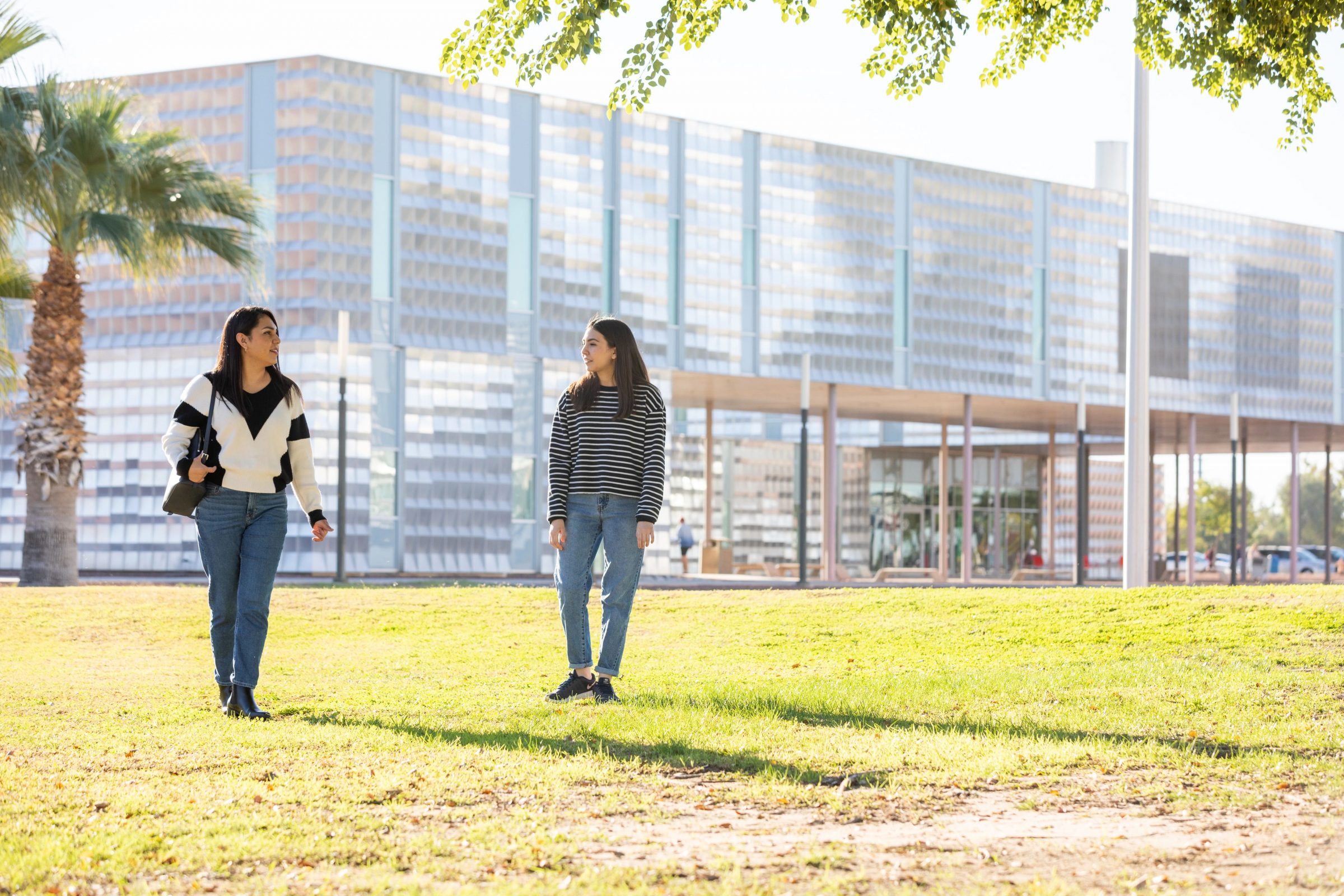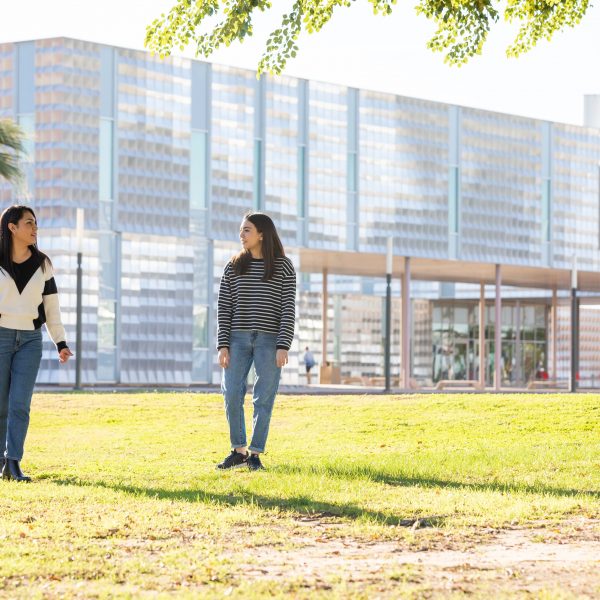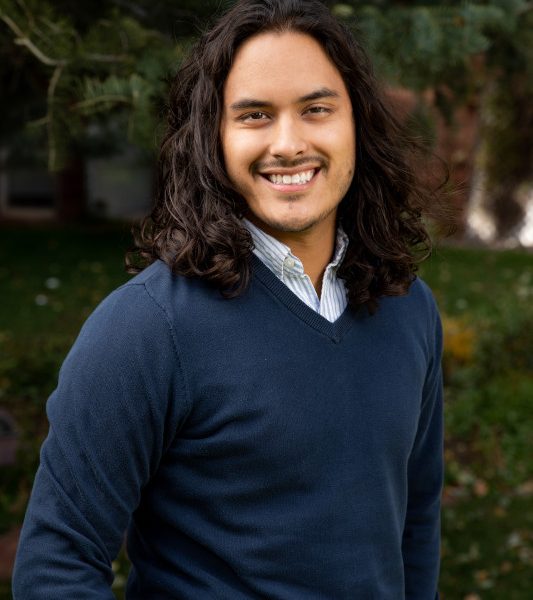NAU–Yuma offers multiple undergraduate and graduate degrees, many informed by the nearby US–Mexico border.
You can’t quite see the United States–Mexico border from NAU–Yuma, but you can feel its presence. Visitors walking around campus will hear as many conversations in Spanish as English. Many students have family on both sides of the border; some even commute to Yuma from Mexico for classes. Going back and forth is just an unremarkable part of everyday life. Many courses offered at NAU–Yuma reflect the location’s diversity, articulate its political and physical geography, and shine a light on the many issues unique to that space. “The students are dealing with border issues on a day-to-day basis. It’s not an abstraction,” says NAU–Yuma Operations Manager Susan Lauer.
With a warm autumn sun blazing above, the campus’ modern metal and glass buildings sparkle as Lauer explains that NAU–Yuma has been part of the Arizona Western College (AWC) campus since 1988. Located on a hill on the northern outskirts of Yuma, it’s just an 18-mile drive south to the border. Lauer points out the three buildings NAU occupies on the AWC campus. In those spaces, NAU holds classes for bachelor’s and master’s students, handles administration and enrollment, and has places dedicated to student support services, including a full computer lab, library, advising center, and veteran and military support center. For its popular nursing programs, NAU–Yuma features a full nursing simulation lab and a skills lab. A psychology lab is also in development so future students can get hands-on research experience.
In addition to sharing space, AWC and NAU have partnered to provide Yuma Union High School students a seamless route to a bachelor’s degree. The YES program guides students through the application process and provides support as they transition from high school to AWC to NAU.
NAU–Yuma offers a wide range of undergraduate majors, several master’s programs, and several minors and certificates. Because of NAU–Yuma’s small size, students receive extensive personal interaction with their professors. Mentorship from his instructors helped Biological and Natural Resource Sciences major Gerardo Noriega transition from community college to NAU–Yuma. “When I got here, I did kind of struggle,” says Noriega. “But my professors were understanding. I could just go to office hours or set up an appointment and get help. It’s not like you’re on your own.”
The students are dealing with border issues on a day-to-day basis. It’s not an abstraction.
– Susan Lauer, NAU–Yuma Operations Manager
For Sociology major Angela Sornia, smaller classes, being close to family, and saving money factored into her decision to transfer from NAU’s Flagstaff campus to NAU–Yuma. “It’s more convenient here,” she says. “I get to visit home whenever I want to.” Proximity to the border is also important to her; she wants to work with non-profits on border issues when she graduates. Her minor in US Mexico Border Social Work will give her an edge in her career goals.
Border issues are central to many other majors at NAU–Yuma, says Lauer, including Social Work, Justice Studies, Education, Logistics and Supply Chain Management, and more. Additionally, being close to the border allows nursing students to undertake internships in both countries. Students can pursue a master’s degree in Bilingual/Multicultural Education or Global Business Administration or a minor in Spanish for Business.
Being able to live at home while going to college was critical for Valeria Sandoval. Sandoval is on track to graduate in spring 2022, with a bachelor’s in Social Work and her eyes on a master’s degree. The convenience and affordability of NAU–Yuma made all the difference to Sandoval, who plans to stay in the area as she pursues her career.
That’s music to Lauer’s ears. “Our goal is to provide education to support the Yuma community. Residents with higher education will bring in more employers, which brings more education.” According to Lauer, the Yuma community lags in the number of residents with college degrees, and NAU–Yuma is committed to closing that gap. Currently, many students at NAU–Yuma are non-traditional. Seventy-nine percent identify as Latinx, and for many, English is not their first language. Many students have jobs and families. NAU–Yuma strives to ensure that all of its disparate students get the support they need to complete their degrees. To accommodate the many working students, most classes are held in the evening.
“We have a really great faculty and staff here to serve the students,” Lauer says, the sun dipping toward the western horizon behind her, the campus filling with students. “Our faculty bend over backwards to serve the students. We’re able to provide financial aid. We’re there to help.”







